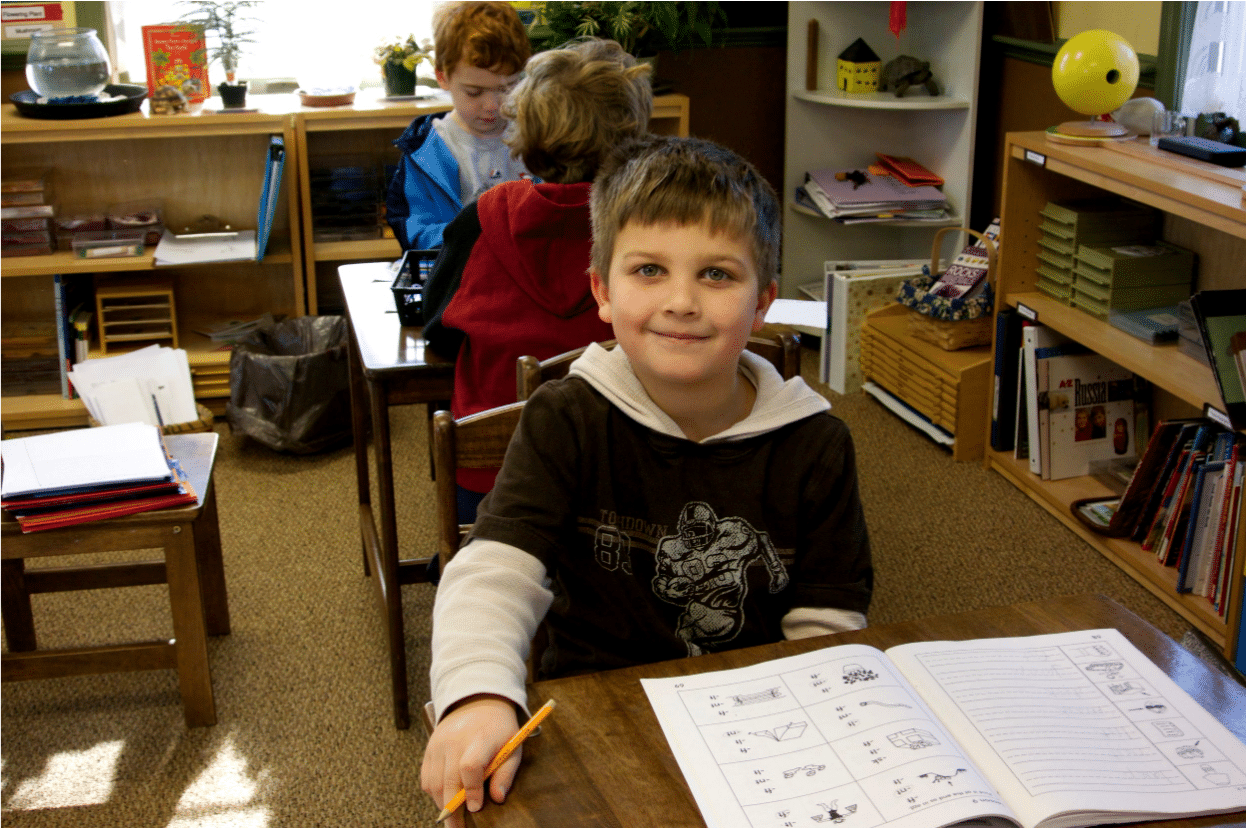Maria Montessori, through observation and analysis, set forward her theory of the Development of the Human Being through stages, which we have come to learn as The Four Planes of Development. Her view of the human being is in the process of becoming. When children are born, they are born with potentialities and possibilities. This is their first birth. We don’t know what their potential are or to what extent they will ever be realized. So from Day One the child is on the path of constructing that self. It is a tremendous, enormous, titanic job.
This task of constructing one’s self is made manageable by the “planes” children pass through. Each period/ plane attends to certain acquisitions, skills to master, to take on; and it all varies from plane to plane to plane.
The First Plane Of Development (Birth To Six)
As current and past prominent child development theorists agree, this first plane of development is crucial in the life of a child. Here children are in the process of creating themselves! They have to create their language, co-ordinate their movement and orient themselves in space BUT – in this plane they also have to take on their own intelligence, imagination and personalities. Montessori says it is in this plane a child in essence creates what it is to be human.
Before the age of six a child creates themselves as an INDIVIDUAL.
It is natural for a young child to be egocentric – how can you HELP but be anything less when you are in the task of creating yourself? The primary work of young children is to create autonomy.
Dr. Montessori says the 1st Plane of Development is a second embryonic life. This is not in the physical sense but a spiritual life where you take on your humanity. The child’s first birth is physical; the second birth is metaphysical.
This gigantic task of building oneself happens through absorption. At first, (from birth through age three) these attributes are absorbed unconsciously. And in the second half of the first plane ( ages 3 – 6), it becomes conscious. Maria Montessori devoted an entire book, The Absorbent Mind, to this topic.
The Sensitive periods that occur within the framework of this plane of development make the task more manageable. Montessori diagrams these planes like an inverted equilateral triangle. The sensitivities begin at birth, increase throughout the first three years – peak at age three – and by the close of the first stage ( age 6) the sensitivities decrease and the work of the first plane should be done.
Just as children created themselves in their humanity and their imagination and their personality and their intelligence and their language before the age of six, the next plane has new work for the child to do that builds on what he has developed before.
The Second Plane Of Development (Ages 6 – 12)
In this plane, the child creates something that will be called upon and tested in the next plane from ages 12 – 18 called: a conscience.
Just as the physical order was important for the 3 -6 year old child, an order is important for the 6 -12 year old child only this time it is a MORAL ORDER, a sense of right and wrong.
Aside and apart from the strong, engaging curriculum we have in place in our elementary classrooms – if one were to look at the work of the second stage of development you would truly see it as a backdrop for dealing with the most important work of this period namely; the continuation of the work the child has in the creation of their conscience.
This age sees the child as morally very wobbly. The need to be taught from the home and re-emphasized in school how to make good choices between right and wrong. They need to see people living HONESTLY and to see people taking a stand for living honestly and justly and for that kind of integrity. Maybe most importantly they have a need for people to take a stand for them when they don’t know what to do in the face of certain dilemmas.
The reason this moral conscience has to be built and in place NOW is so that when it IS called into question in the very scary next plane of teenage years, that they have no moral wobbliness and will make good choices. They can’t lean a conscience in the third plane. Too late.
With this brief examination of the first two planes, you can see how this is an ongoing process: one plane and attendant sensitivities lead to the next. And when the sensitivities of that plane are addressed and serviced the work of that plane is done.
It is a little ironic that society says to send children to school at age 6 because at that age they can be taught. The reality is that their personalities are formed and we don’t impact them all that much. As they get older we increase the impact we say they’re ready for by the number of subjects they take and the number of teachers they have and even when we can introduce a foreign language. We do these things
Because we say that’s what society needs from children not the other way around.
Maria Montessori said, “Isn’t it time we enfranchised HUMAN DEVELOPMENT?”
The planes of development and the sensitive periods recognize a pathway children are on and support them on that pathway so children can develop their personalities. The materials in the classroom aren’t there to make kids smarter but are there so that they stay engaged in their own development.
Here is an opportunity to totally engage in their own development so they can
- Develop their language
- Coordinate their movement
- Mature their personality
- Grow in their humanity
- Build their imagination
- And develop good moral character


